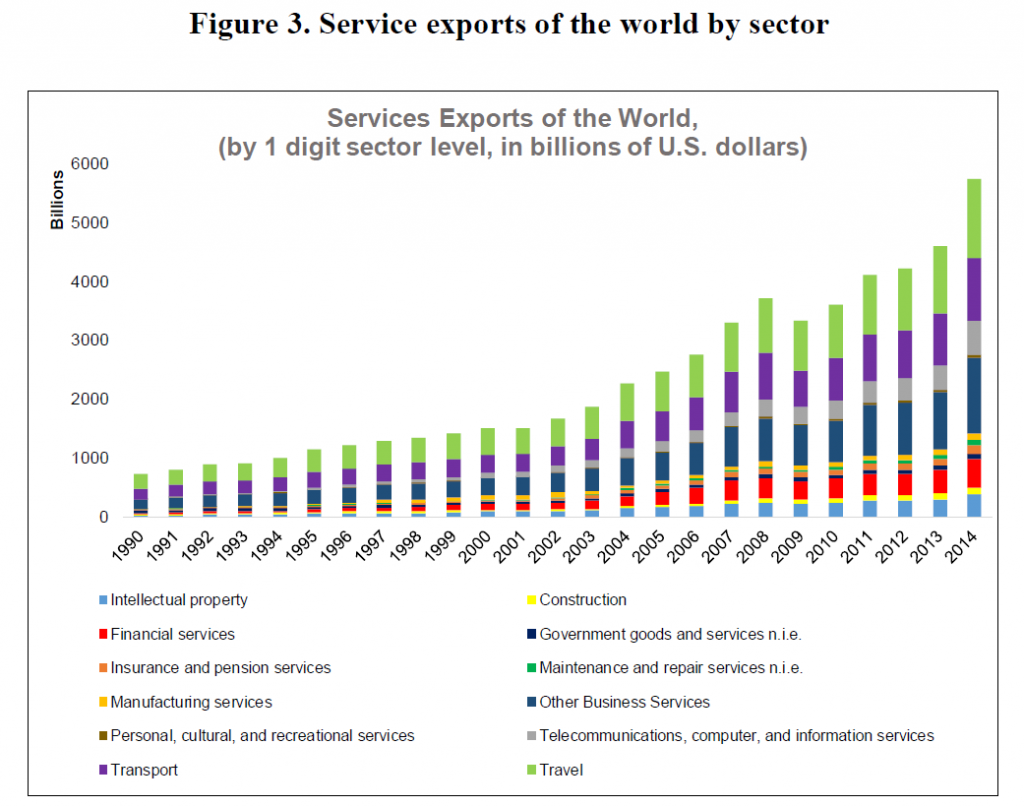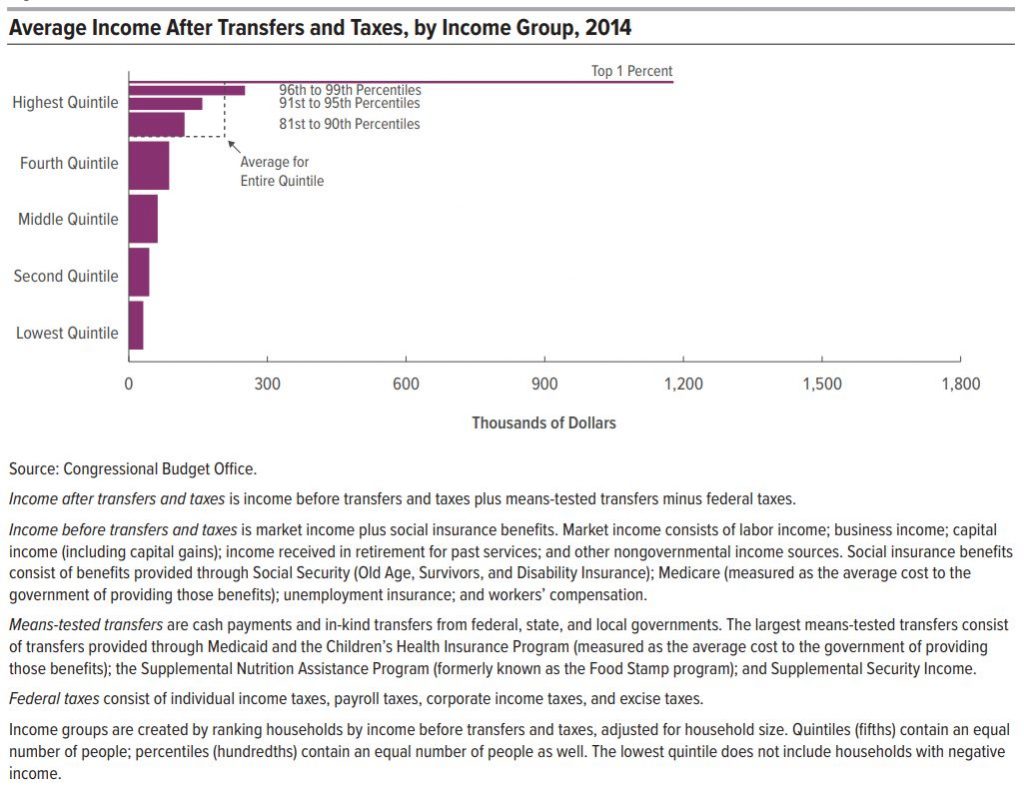Thursday, March 29, 2018
Monetary Policy, Labour Income, and Inequality
A new paper from the Bank of England finds that in UK, the impact of monetary policy on inequality depends on existing difference in income and wealth.“[…] younger households are estimated to have benefited most from higher income in cash terms, while older households gained more from higher wealth.”
The paper notes that “Furceri, Loungani, and Zdzienicka (2016) emphasise the importance of heterogeneity in the response of labour income to monetary policy as a key channel, noting evidence that those at the bottom of the income distribution are most affected by changes in economic activity.” Continue reading here.
See my previous post on monetary policy and inequality here. The Furceri, Loungani, and Zdzienicka (2016) paper is available here.
A new paper from the Bank of England finds that in UK, the impact of monetary policy on inequality depends on existing difference in income and wealth.“[…] younger households are estimated to have benefited most from higher income in cash terms, while older households gained more from higher wealth.”
The paper notes that “Furceri, Loungani, and Zdzienicka (2016) emphasise the importance of heterogeneity in the response of labour income to monetary policy as a key channel,
Posted by at 2:22 PM
Labels: Inclusive Growth
Tuesday, March 27, 2018
The Gains from (Services) Trade
A new paper from the Bank of England says that “liberalising services trade, levelling up to the liberalisation seen in goods trade, could reduce excess global imbalances by around 40%. […] The potential rewards [of services trade liberalisation] are much broader. The great prize could be reinvigorating global growth.”
The paper notes that “seminal work by Baumol (1967) underpinned the ‘classical view’ of the contribution of services to growth. This view was unambiguously negative, indicating that services were largely non-tradable and exhibited little scope for productivity improvements. But services have changed significantly since then and evidence today suggests that services are widely traded across borders (Loungani et al (2017)) and that, when services productivity is correctly measured, historical services productivity growth has been as strong as manufacturing (Young (2014)). Many studies confirm positive linkages between service sector liberalisation and economic growth. There are three aspects to this: direct benefits for the services sector, downstream benefits for production in other sectors which use services, and the potential distribution benefits from services growth.” Continue reading here.
The Loungani et al paper and our new data set on services trade are available here.
Source: Loungani et al (2017).
A new paper from the Bank of England says that “liberalising services trade, levelling up to the liberalisation seen in goods trade, could reduce excess global imbalances by around 40%. […] The potential rewards [of services trade liberalisation] are much broader. The great prize could be reinvigorating global growth.”
The paper notes that “seminal work by Baumol (1967) underpinned the ‘classical view’ of the contribution of services to growth. This view was unambiguously negative,
Posted by at 8:25 PM
Labels: Inclusive Growth
Friday, March 23, 2018
Housing View – March 23, 2018
On cross-country:
- The Pursuit of Financial Stability and Tasks for Monetary, Regulatory, and Macro-Prudential Policies – IMF
- True Affordability: Critiquing the International Housing Affordability Survey – Victoria Transport Policy Institute
On the US:
- Affordable housing: Supply side innovation? – Rutgers Center for Real Estate
- Land-Use Regulations, Property Values, and Rents: Decomposing the Effects of the California Coastal Act – Federal Reserve Bank of Philadelphia
- For Low-Income Renters, the Affordable Housing Gap Persists – Citylab
- How Mortgage Companies Might Finally Be Held Accountable – The Nation
- Segregation Forever? Richard Rothstein speaks at the U.S. Department of Housing and Urban Development – Economic Policy Institute
- Mortgage Debt and Shadow Banks – De Nederlandsche Bank
- Housing as a hub for health, community services, and upward mobility – Brookings
- The Seven Sizzling Housing Markets – John Burns Real Estate Consulting
- The Next Housing Crisis: A Historic Shortage of New Homes – Wall Street Journal
- Spring may not be so hot for U.S. housing markets – Global Property Guide
- A housing recovery without homeowners – Federal Reserve Bank of St. Louis
- California Housing Problems Are Spilling Across Its Borders – New York Times
- Trump’s Tariffs Will Make Housing More Unaffordable – Reason
- Valuing urban land: Comparing the use of teardown and vacant land sales – Regional Science and Urban Economics
- Suburban Housing Costs Are Stretching Families to the Brink – Slate
- Commuting, Labor, and Housing Market Effects of Mass Transportation: Welfare and Identification – Federal Reserve Bank of Philadelphia
- How Do Funding and Review Processes Shape the Design of Affordable Housing? – Harvard Joint Center for Housing Studies
On other countries:
- [Canada] The Propagation of Regional Shocks in Housing Markets: Evidence from Oil Price Shocks in Canada – Bank of Canada
- [Iceland] Short-term renting of residential apartments Effects of Airbnb in the Icelandic housing market – Central Bank of Iceland
- [Switzerland] Swiss central bank warns of ‘correction’ in real estate – Financial Times
- [United Kingdom] Rethinking London’s ‘ripple effect’ on house prices: other UK regions transmit shocks too – London School of Economics
- [United Kingdom] Home Ownership Aspirations Survey – Cluttons
Photo by Aliis Sinisalu
On cross-country:
- The Pursuit of Financial Stability and Tasks for Monetary, Regulatory, and Macro-Prudential Policies – IMF
- True Affordability: Critiquing the International Housing Affordability Survey – Victoria Transport Policy Institute
On the US:
- Affordable housing: Supply side innovation? – Rutgers Center for Real Estate
- Land-Use Regulations, Property Values, and Rents: Decomposing the Effects of the California Coastal Act – Federal Reserve Bank of Philadelphia
- For Low-Income Renters,
Posted by at 5:00 AM
Labels: Global Housing Watch
Thursday, March 22, 2018
How much people make
From the US Congressional Budget Office (CBO):
In 2014, household income was unevenly distributed: Households at the top of the income distribution received significantly more income than households at the bottom of the distribution. According to the Congressional Budget Office’s estimates:
- Average income among households in the lowest quintile (or fifth) of the income distribution was about $19,000.
- Average income among households in the highest quintile was about $281,000.
Furthermore, within the highest quintile, income was highly skewed toward the very top of the distribution: Average income among households in the bottom half of the highest quintile (the 81st to 90th percentiles) was about $151,000; average income among the 1.2 million households in the top 1 percent of the distribution was about $1.8 million.
Those amounts include social insurance benefits (such as benefits from Social Security and Medicare) but exclude the effects of governmental policies that directly affect the distribution of household income either through means-tested transfer programs or through the federal tax system.
Means-tested transfers are cash payments and in-kind benefits from federal, state, and local governments that are designed to provide assistance to individuals and families with low income and few assets. They include benefits from government assistance programs such as Medicaid and the Children’s Health Insurance Program (CHIP), the Supplemental Nutrition Assistance Program (SNAP, formerly known as the Food Stamp program), and Supplemental Security Income (SSI). Federal taxes consist of individual income taxes, payroll taxes, corporate income taxes, and excise taxes. Means-tested transfers and federal taxes cause household incomes to be more evenly distributed. In 2014, those transfers and taxes:
- Increased income among households in the lowest quintile by $12,000 (or more than 60 percent), on average, to $31,000.
- Decreased income among households in the highest quintile by $74,000 (or more than 25 percent), on average, to $207,000.
CBO has analyzed the distribution of household income and federal taxes on a recurring basis for more than 30 years. For this report, the agency focused on the distribution of household income in 2014 because that is the most recent year for which relevant data were available when the analysis began. In addition, CBO assessed trends in household income, means-tested transfers, federal taxes, and income inequality over a 36-year period, beginning in 1979 and ending in 2014.
Read the full report here.
From the US Congressional Budget Office (CBO):
In 2014, household income was unevenly distributed: Households at the top of the income distribution received significantly more income than households at the bottom of the distribution. According to the Congressional Budget Office’s estimates:
- Average income among households in the lowest quintile (or fifth) of the income distribution was about $19,000.
- Average income among households in the highest quintile was about $281,000.
Posted by at 3:11 PM
Labels: Macro Demystified
Paul Ehrlich: “Collapse of civilisation is a near certainty within decades”
From an interview article by Damian Carrington:
“Ashattering collapse of civilisation is a “near certainty” in the next few decades due to humanity’s continuing destruction of the natural world that sustains all life on Earth, according to biologist Prof Paul Ehrlich.
In May, it will be 50 years since the eminent biologist published his most famous and controversial book, the Population Bomb. But Ehrlich remains as outspoken as ever.
The world’s optimum population is less than two billion people – 5.6 billion fewer than on the planet today, he argues, and there is an increasing toxification of the entire planet by synthetic chemicals that may be more dangerous to people and wildlife than climate change.
Ehrlich also says an unprecedented redistribution of wealth is needed to end the over-consumption of resources, but “the rich who now run the global system – that hold the annual ‘world destroyer’ meetings in Davos – are unlikely to let it happen”.
[…]
More of Paul and Anne Ehrlich’s reflections on their book are published in The Population Bomb Revisited.”
From an interview article by Damian Carrington:
“Ashattering collapse of civilisation is a “near certainty” in the next few decades due to humanity’s continuing destruction of the natural world that sustains all life on Earth, according to biologist Prof Paul Ehrlich.
In May, it will be 50 years since the eminent biologist published his most famous and controversial book, the Population Bomb. But Ehrlich remains as outspoken as ever.
Posted by at 1:16 PM
Labels: Forecasting Forum
Subscribe to: Posts







